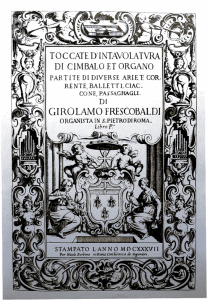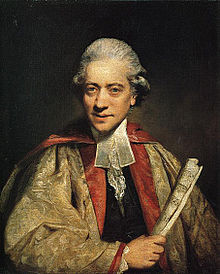ANCIENT DOCUMENTS
The last point to be developed (among those proposed in the previous article about the sources of information on the repertoire of the 17th and 18th centuries), is related to the ancient documents.
 Treaties are definitely the main sources of information, although for a novice or for those who do not live exclusively for early music, perhaps are more useful the prefaces, the letters, the travel commentaries or the gleanings that clarify some important aspects on the topic.
Treaties are definitely the main sources of information, although for a novice or for those who do not live exclusively for early music, perhaps are more useful the prefaces, the letters, the travel commentaries or the gleanings that clarify some important aspects on the topic.
I suggest, however, to read at least one of the three great treatises written in the mid-eighteenth century: the Versuch über die wahre Art das Clavier zu spielen written by Johann Joachim Quantz (Berlin – 1752), the Versuch über die wahre Art das Clavier zu spielen by Carl Philipp Emanuel Bach (Berlin – 1753) and the Versuch einer gründlichen Violinschule by Leopold Mozart (Augsburg – 1756).
For an accordion player it might be more interesting to read the two volumes that are part of the treatise written by Carl Philipp Emanuel Bach (even if the second one is about Accompaniment and free Improvisation, I suggest anyway to consult both of them), or the treatise published slightly later by Daniel Gottlob Türk (1789) – Klavierschule, but we must not exclude the other two works only because they deal with the flute and the violin.
In fact, all three works, besides dealing with the technique and the characteristics of the instruments to which they are dedicated, deal also with some issues related to musical notation, accompaniment, musical theory and everything useful for the development of a “buon gusto” both for a professional and an amateur [1] musician.
It is interesting to note that although the three documents analyze the Italian and the French style, they were created in Germany due to the fact that in the eighteenth century Germany was the cradle of the compendium of great Italian and French schools. Quantz dwells much on the peculiar capabilities of synthesis of the German school; we can note this peculiarity for example in the work of Georg Muffat, Buxtehude, Handel and Johann Sebastian Bach.
I will not deal with treatises any further, even if it is possible to consult a large number of them, from the Ars musicae by Jean de Grouchy (about 1330) to the nineteenth century treatises which show how the influences of aesthetics of the eighteenth century, after being readapted and revised, are well present until the beginning of the twentieth century. [2]
In the second part of this article, I would like to offer some ideas that allow to find some information useful to understand the characteristics of the repertoire of the seventeenth and eighteenth century. It is possible to access these information really easily, but often we do not exploit this possibility. Obviously I’m not able to provide a coherent and comprehensive picture of the available documents, but I have the intention to stimulate the curiosity of the readers.
 Let’s start with some prefaces and in particular with the emblematic case of “Inventionen und Sinfonien” by J.S. Bach with which pianists and accordionists deal sometimes in an unconscious way.
Let’s start with some prefaces and in particular with the emblematic case of “Inventionen und Sinfonien” by J.S. Bach with which pianists and accordionists deal sometimes in an unconscious way.
Bach wrote a short introduction in which he states that the purpose of the work is mainly to make the keyboard lovers play in a “cantabile” style. It would be enough to read these few words (which are normally reported by the “Urtext” editions), in order to avoid dealing with the small masterpieces of Bach in the same way as with the common studies on agility.
Other precious prefaces, often unknown to the performers, are those of Girolamo Frescobaldi to the Capricci, Fiori Musicali and Toccate. Let’s consider the “Avvertimenti” that introduce the player to the Toccate. The Toccate are performed very often by accordionists. They are complex and elaborated compositions, really difficult for a modern performer, who has to deal with “mensure”, “affetti” and figures of speech still linked to the late Renaissance aesthetics. Probably the Toccate were rather complicated even for the contemporaries of Frescobaldi, so that the composer was concerned to draw up the “Avvertimenti” to help the performer to solve the issues related to keyboard technique, “affetti” and music theory.
Obviously I do not want to assert that by reading the “Avvertimenti” it is possible to play the Toccate with no problems, but surely they provide some good ideas and they allow to avoid lots of misunderstandings and lots of inaccuracies.
Concerning the Frescobaldi’s notes in his compositions: in “Canzoni da sonare a una, due tre et quattro” (Rome, 1628), the composer writes, “come stà“, which we interpret as the prohibition of adding “passaggi” (or at least to add too many of them). These two words confirm that the practice of ornamentation and “diminuzione” was really widespread in the seventeenth century and sometimes it was necessary to limit it.
The prefaces (even when they do not provide precise guidance on the interpretation), may contain information useful to define the social and cultural context in which the composer works. This is the case, for example, of the preface that Handel wrote to the “Suites de pieces pour le clavecin” (London, 1720).
The “Caro Sassone” states: “I have been obliged to publish some of the following Lessons, because surreptitious and incorrect Copies of them had got Abroad…” and we understand that “piracy” existed in the 18th century, and that, despite the practical difficulties, all kind of works quickly spread beyond the national borders and that, often, the copies contained lots of inaccuracies.
Even the “minor” documents may have their importance. When we read the recommendations of Haydn attached to three new Symphonies that have to be performed, (“I humbly ask you to tell the Kappellmeister that these three symphonies (90-91-92), because of the particular effects that exist in writing, should be tested at least once, carefully, and with a certain focus, before their execution“) in addition to smile, we also understand that at the time the sight reading was quite the rule.
Sometimes a few words are enough to heighten some personalities who we unjustly consider as less important. This is the case of Carl Philipp Emanuel Bach, second son of Johann Sebastian, who in our perception is a “minor” composer, son of the great Johann Sebastian, but for his contemporaries he was the most important Bach.
The quality of his writing makes it clear that we are dealing with a personality of first order, but the words of W.A. Mozart (“He is the father, we are the children“) clarify the idea that contemporaries had of him.
 In conclusion, I point out the utility and the pleasure of reading the travel notes of Charles Burney (1726-1814), English historian and musician, and probably author of the first story of the music ever published. In his books “The Present State of Music in France and Italy” and “The Present State of Music in Germany, the Netherlands, and United Provinces” Burney provides a cross section of the society and of the cultural life (not just musical) of his era and he provides an inexhaustible series of anecdotes and of information about the musicians thanks to the fact that he knew them directly.
In conclusion, I point out the utility and the pleasure of reading the travel notes of Charles Burney (1726-1814), English historian and musician, and probably author of the first story of the music ever published. In his books “The Present State of Music in France and Italy” and “The Present State of Music in Germany, the Netherlands, and United Provinces” Burney provides a cross section of the society and of the cultural life (not just musical) of his era and he provides an inexhaustible series of anecdotes and of information about the musicians thanks to the fact that he knew them directly.
I really hope that this third article offers some useful impetus to stimulate the curiosity of the readers, I send my regards to all the friends of strumentiemusica.com with the promise that I will not make you wait too much for my fourth intervention.
I am really grateful to Emilia Fadini for her valuable suggestions and I wish to everyone a great 2015.
(Translated by Marta Cogotti)
[1] The eighteenth-century concept of "amateur" differs from the modern meaning. At the time, the "amateur" was a person of high social standing and of good cultural education. Moreover, the “amateur” was interested in art, often at a high level, for his own pleasure and not for material needs.
[2] If somebody is really interested in the subject, it is possible to follow the project ITMI (http://www.itmi.it/inglese/home.htm) that list the theoreticians and the treatises and that catalog and index all the quotes, or the RISM (International Repertoire of musical sources) work (http://www.rism.info/en/home.html), an international organization created in 1952 in Paris with the aim of documenting in an exhaustively way all musical sources.
Photo 1 Title page of the first book of the Toccate di Frescobaldi (1637) Photo 2 Image of the Avvertimenti di Frescobaldi - Second Book of the Toccate (1637) Photo 3 Portrait of Charles Burney
Questo post è disponibile anche in: Italian

 English
English Italiano
Italiano 





Leave a comment
You must be logged in to post a comment.